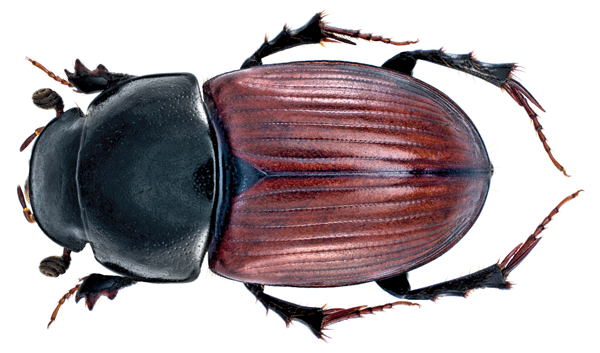
What do beetles and hackers have in common? More than you’d think.
They utilize the same sneaky tactics to defeat their opponents with limited investment in their attacks. The goals of beetles seeking to outmaneuver larger males blocking their tunnels in order to get to females is directly comparable to the cyber-hacking methods used by the Chinese against the U.S. military.
On Monday, Feb. 29, the Department of Evolutionary Studies hosted Doug Emlen, Ph.D., a biology professor at the University of Montana, for his lecture titled “Extravagant Weapons: The Story Behind Arms Races in Animals and People.”
SUNY New Paltz President Donald P. Christian introduced Emlen, who was a longtime colleague at the University of Montana, where Christian served as Associate Dean of the biology department from 1997 to 2004. Together, they studied dung beetles and even made a scientific excursion through the Serengeti in East Africa.
“I’m interested in the extreme cases of animal weaponry,” Emlen said. “I want to know why weapons get bigger and what affects that tension of balance to pull animals into an arms race.”
Emlen focused the majority of his lecture on how certain circumstances favor animals with big weapons and how the element of unpredictably can be a disservice to them. The trigger effects for animals, either for their desire to have bigger weapons like horns or claws, depends on the scenario and the goal for the animals.
Most fights between animals revolves around sexual selection, primarily male-on-male battles for female mates. In those cases, females realize that animals with bigger weapons will likely win those fights and mate with the victors. Males account for that, but others realize that at some point the biggest weapons can actually contradict their efforts.
Sabertooth tigers with overgrown fangs and beetles with 16-inch horns can be slowed down by their weapons and therefore lose out to animals with smaller weapons. Emlen made an exception for ambush predators, which are animals that “sit-and-wait” to use their bigger weapons to secure their prey or defeat opponents. Such examples would be praying mantises and anglerfish, which utilize quick strikes to survive in their respective environments.
“These creatures don’t need to hunt,” Emlen said. “These are specialized predators who lack speed and need big weapons. There’s a cost-benefit analysis animals must account for to find the balance that’s most appropriate for them.”
Emlen named three instances when extreme weapons are used by animals: in competition, limiting resources or duels. These prerequisites for an arms race provide each side with a clear objective when fighting and help define victory. Duels, which remove the potential for an unpredictable scramble, benefit those with bigger weapons. This explains why beetles fight directly with their horns on linear battle sites, such as on a tree branch or in a tunnel underground. Emlen correlated this scenario to how old wooden ships lined up next to each other in order to fire cannons at each other.
The conclusion of Emlen’s lecture solidified his argument that there is a strong link between both animal and human arms races. Citing the Cold War as the ultimate duel in modern history, Emlen focused on how changing technologies caused militaries to focus on acquiring bigger weapons. At the same time, Emlen spoke about how increased weaponry causes hesitation when it comes to fighting, in both animal and human arms races.
In a study of 11,000 caribou fights, only six resulted in knock-down drag-out fights, according to Emlen. This deterrence of fighting is what Emlen referred to as a ‘paradox of peace,’ which has the potential to save humans from actual militaristic duels. Understanding the constantly-shifting rules of modern war, Emlen did acknowledge that hackers can undermine even the greatest military in the world, citing two Chinese hacking incidents of the U.S. military in the past decade.
Comparing their minimally cost-effective efforts to those of beetles without horns burrowing around the tunnels blocked off by beetles with bigger horns, Emlen displayed how Chinese hackers could upend a massively larger military ahead of them. By avoiding traditional battlegrounds, hackers can usurp authority from their opponents and cause damage by using those bigger weapons against them.
“Guerilla warfare is exactly like sneaky strategies used by beetles,” Emlen said. “Cheaters are those who can’t mate and don’t play by the rules. What the hackers are doing now is the ultimate sneak strategy.”
